Zhaoran Liu
Mixture of Low Rank Adaptation with Partial Parameter Sharing for Time Series Forecasting
May 23, 2025Abstract:Multi-task forecasting has become the standard approach for time-series forecasting (TSF). However, we show that it suffers from an Expressiveness Bottleneck, where predictions at different time steps share the same representation, leading to unavoidable errors even with optimal representations. To address this issue, we propose a two-stage framework: first, pre-train a foundation model for one-step-ahead prediction; then, adapt it using step-specific LoRA modules.This design enables the foundation model to handle any number of forecast steps while avoiding the expressiveness bottleneck. We further introduce the Mixture-of-LoRA (MoLA) model, which employs adaptively weighted LoRA experts to achieve partial parameter sharing across steps. This approach enhances both efficiency and forecasting performance by exploiting interdependencies between forecast steps. Experiments show that MoLA significantly improves model expressiveness and outperforms state-of-the-art time-series forecasting methods. Code is available at https://anonymous.4open.science/r/MoLA-BC92.
Proximity Matters: Local Proximity Preserved Balancing for Treatment Effect Estimation
Jul 01, 2024



Abstract:Heterogeneous treatment effect (HTE) estimation from observational data poses significant challenges due to treatment selection bias. Existing methods address this bias by minimizing distribution discrepancies between treatment groups in latent space, focusing on global alignment. However, the fruitful aspect of local proximity, where similar units exhibit similar outcomes, is often overlooked. In this study, we propose Proximity-aware Counterfactual Regression (PCR) to exploit proximity for representation balancing within the HTE estimation context. Specifically, we introduce a local proximity preservation regularizer based on optimal transport to depict the local proximity in discrepancy calculation. Furthermore, to overcome the curse of dimensionality that renders the estimation of discrepancy ineffective, exacerbated by limited data availability for HTE estimation, we develop an informative subspace projector, which trades off minimal distance precision for improved sample complexity. Extensive experiments demonstrate that PCR accurately matches units across different treatment groups, effectively mitigates treatment selection bias, and significantly outperforms competitors. Code is available at https://anonymous.4open.science/status/ncr-B697.
Modeling Task Relationships in Multi-variate Soft Sensor with Balanced Mixture-of-Experts
May 25, 2023



Abstract:Accurate estimation of multiple quality variables is critical for building industrial soft sensor models, which have long been confronted with data efficiency and negative transfer issues. Methods sharing backbone parameters among tasks address the data efficiency issue; however, they still fail to mitigate the negative transfer problem. To address this issue, a balanced Mixture-of-Experts (BMoE) is proposed in this work, which consists of a multi-gate mixture of experts (MMoE) module and a task gradient balancing (TGB) module. The MoE module aims to portray task relationships, while the TGB module balances the gradients among tasks dynamically. Both of them cooperate to mitigate the negative transfer problem. Experiments on the typical sulfur recovery unit demonstrate that BMoE models task relationship and balances the training process effectively, and achieves better performance than baseline models significantly.
AttentionMixer: An Accurate and Interpretable Framework for Process Monitoring
Feb 21, 2023



Abstract:An accurate and explainable automatic monitoring system is critical for the safety of high efficiency energy conversion plants that operate under extreme working condition. Nonetheless, currently available data-driven monitoring systems often fall short in meeting the requirements for either high-accuracy or interpretability, which hinders their application in practice. To overcome this limitation, a data-driven approach, AttentionMixer, is proposed under a generalized message passing framework, with the goal of establishing an accurate and interpretable radiation monitoring framework for energy conversion plants. To improve the model accuracy, the first technical contribution involves the development of spatial and temporal adaptive message passing blocks, which enable the capture of spatial and temporal correlations, respectively; the two blocks are cascaded through a mixing operator. To enhance the model interpretability, the second technical contribution involves the implementation of a sparse message passing regularizer, which eliminates spurious and noisy message passing routes. The effectiveness of the AttentionMixer approach is validated through extensive evaluations on a monitoring benchmark collected from the national radiation monitoring network for nuclear power plants, resulting in enhanced monitoring accuracy and interpretability in practice.
Towards Relation Extraction From Speech
Oct 17, 2022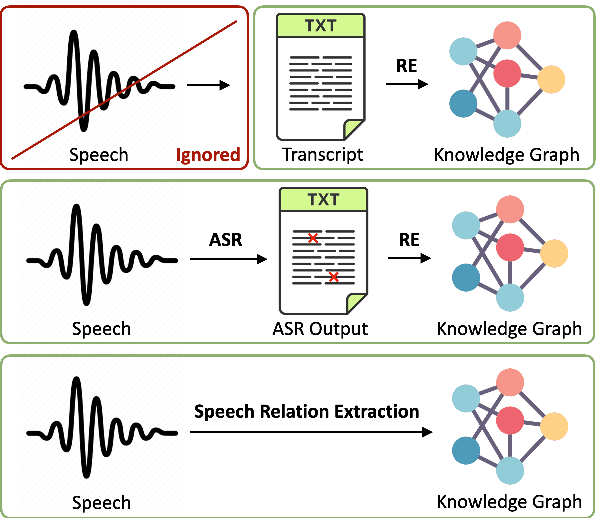

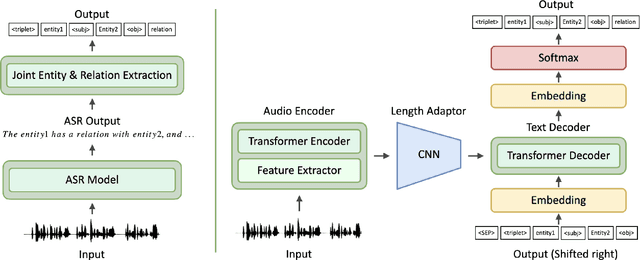

Abstract:Relation extraction typically aims to extract semantic relationships between entities from the unstructured text. One of the most essential data sources for relation extraction is the spoken language, such as interviews and dialogues. However, the error propagation introduced in automatic speech recognition (ASR) has been ignored in relation extraction, and the end-to-end speech-based relation extraction method has been rarely explored. In this paper, we propose a new listening information extraction task, i.e., speech relation extraction. We construct the training dataset for speech relation extraction via text-to-speech systems, and we construct the testing dataset via crowd-sourcing with native English speakers. We explore speech relation extraction via two approaches: the pipeline approach conducting text-based extraction with a pretrained ASR module, and the end2end approach via a new proposed encoder-decoder model, or what we called SpeechRE. We conduct comprehensive experiments to distinguish the challenges in speech relation extraction, which may shed light on future explorations. We share the code and data on https://github.com/wutong8023/SpeechRE.
Analyze and Design Network Architectures by Recursion Formulas
Aug 18, 2021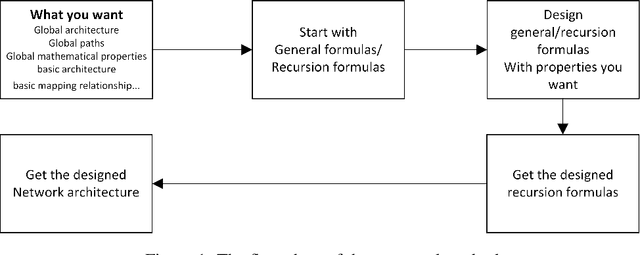
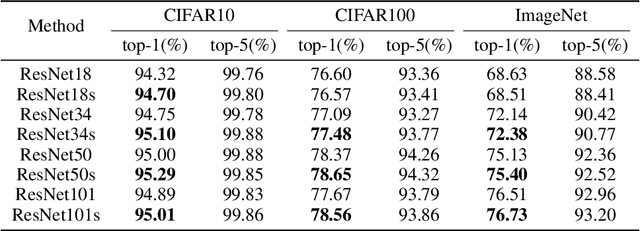
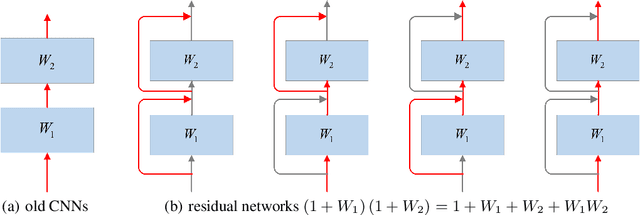
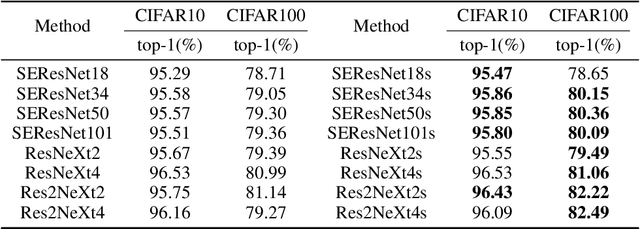
Abstract:The effectiveness of shortcut/skip-connection has been widely verified, which inspires massive explorations on neural architecture design. This work attempts to find an effective way to design new network architectures. It is discovered that the main difference between network architectures can be reflected in their recursion formulas. Based on this, a methodology is proposed to design novel network architectures from the perspective of mathematical formulas. Afterwards, a case study is provided to generate an improved architecture based on ResNet. Furthermore, the new architecture is compared with ResNet and then tested on ResNet-based networks. Massive experiments are conducted on CIFAR and ImageNet, which witnesses the significant performance improvements provided by the architecture.
 Add to Chrome
Add to Chrome Add to Firefox
Add to Firefox Add to Edge
Add to Edge